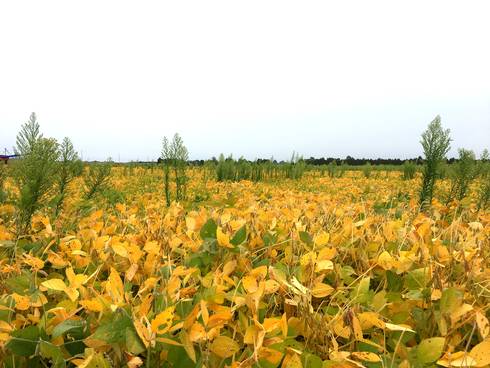August 14, 2019

The current approach to weed management in Iowa is at risk due to rapid expansion of herbicide-resistant weeds. In order to preserve the efficacy of herbicides two things must happen: 1) adoption of integrated weed management, and 2) shift the goal of weed management from protecting crop yields to minimizing the size of the weed seed bank. The first requires a shift in behavior, the second a change in attitude.
At a recent industry-sponsored field day a speaker discussed his company’s soybean herbicide portfolio and the unique problems posed by waterhemp. He addressed both of the above issues, including the statement that farmers should strive to eradicate waterhemp from their fields.� As I walked to the next station I was approached by several of the company reps. My initial thought was 'I haven’t said anything that could possibly upset them', but it turns out they were just seeking my opinion on their suggestion that we attempt to eradicate waterhemp and other problem weeds.
So what do I think about ‘eradicating’ waterhemp? First, it’s a pipe dream. People involved in pest management long ago gave up on the idea of eradicating established pests. The goals for managing pests at different stages of invasion include: 1) prevention, 2) eradication, 3) containment, and 4) control (Figure 1). We are long past the point where it is feasible to eradicate or contain waterhemp (or any of our other common weeds). We shouldn’t forget that waterhemp is native to Iowa and the western Cornbelt. We can realistically talk about eradicating Palmer amaranth in much of Iowa, in some areas we are probably at the containment stage.

Having said that, I don’t have a problem promoting the concept of waterhemp eradication. Another company has promoted the concept of ‘zero seed threshold’, with the goal of preventing production of any weed seed within a field. I don’t think this is an achievable goal on the scale of today’s agriculture either. However, there is nothing wrong with setting high/unrealistic goals for weed management if it will change behavior.
The widespread acceptance of late-emerging waterhemp escapes that don’t pose a threat to yield or harvest efficiency is the engine driving the rapid evolution of herbicide resistance in this species. Anything that can be done to change this behavior will pay long-term dividends. If promoting weed eradication or zero-seed thresholds can change attitudes towards weed management and promote the adoption of integrated weed management I am all in.
About the Author(s)
You May Also Like




